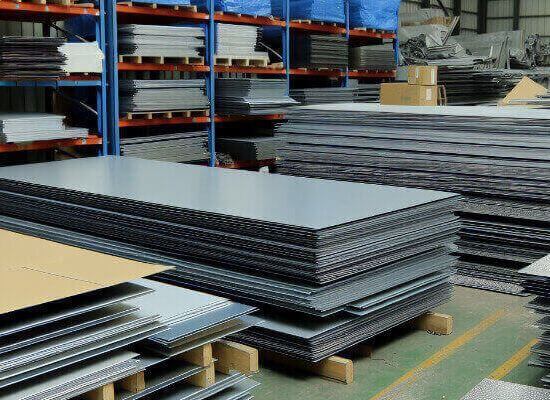Sheet metal forming is considered to be a cost effective method of producing certain types of parts. Sheet metal is cut to size and then formed to the desired geometry. But here’s the thing: if your design is more obscure, the cost can quickly go from low to high. So your low-cost part can quickly become a luxury item made from humble sheet metal. Finally, you may end up increasing your production time. The cost of a part is largely a function of the number of steps involved in its manufacture.

Let’s start with this premise: pre-painted sheet metal cannot be welded safely. When the treated metal is overheated, the coating releases zinc oxide, a highly toxic compound that evaporates into gas. Ultimately, this is bad for both workers and the environment.
If welding is required, you have one choice. Use uncoated cold-rolled steel. You can then have your parts coated to improve corrosion resistance. The downside is that it will definitely increase your lead times and costs.
Instead, look at your designs and see if there are ways to avoid welding. If you do, you can use pre-painted steel. If joining sheets is critical, consider using rivets.
One of the easiest ways to save time and money is to consider the manufacturer’s standard tooling when designing your part. For example, an inside bend radius should always be between 0.030 inches (0.762 mm) and the material thickness. These specifications tend to work well for most shops. Rather than using special tooling kits or other methods to achieve the exact geometry, they can form your radius using tooling made specifically to these specifications.
The two go hand in hand. Firstly, aluminium (6061-T6 or 5052-H32), steel (CRS1008) and stainless steel (304-2B) are all common sheet metals that are readily available from stock, so you are less likely to incur special order charges from the manufacturer. This saves you time and money.
However, material selection is not just about cost. If your part is going to be used in a harsh environment, it makes sense to choose a pre-plated metal material. However, as mentioned above, if welds are required, pre-plated materials such as zinc plating and electro-galvanising cannot be used.
Also, some materials are inherently less susceptible to corrosion. If you do need a special surface treatment, it may not cost too much. Some common surface treatments tend to be quicker and cheaper.
Anodising, chromating, galvanising, stainless steel passivation and powder coating are all readily available with minimal impact on cost and lead time compared to specialist surface treatments.
Another reason for using common materials and finishes is speed. Using special materials and finishes requires the estimator to obtain quotes from outside sources, which increases the preparation time.
This is probably the simplest and most obvious tip for reducing sheet metal costs. Specialised design features may look great, and sometimes there are good reasons for them, but it is good practice to leave them out of your model and go for simplicity. If you are on a tight budget, adding features such as machined pockets, blind holes and chamfers can increase costs and lead times. However, chamfers, for example, give a sheet metal part a nice look and can reduce the chances of users being stabbed by sharp metal edges.
If you include stamped and formed features in your design, such as bridge lances, embossing and ribs, you should aim for standardised dimensions to avoid manufacturing delays and increased costs. If you need very specific dimensions for these features, you should include this information in your enquiry and note it in your model. For example, let’s say you need a bridge lance that is 0.100″ (2.54mm) high, 0.100″ (2.54mm) wide and 0.625″ (15.875mm) long. Simply changing two of these dimensions to 0.090″ (22.86mm) wide and 0.600″ (15.24mm) long would allow you to use your own tooling, reducing cost and time. If you receive a quote from us, you may find similar suggestions.
If you are in the early prototyping stages of product development, it may not be important for you to see the appearance of certain surface finishes on your parts. Instead, consider leaving surface finishes such as screen printing and engraving for later.
As you prepare to explore different finishes, remember that screen printing, while expensive, is much more affordable than machine engraving. Sure, engraving is permanent, but the cost may make it impractical. Want to add permanence to screenprinted elements? Try using a clear powder coating to seal and cover the information. This will add time and cost to the part, but could save you money in the long run.